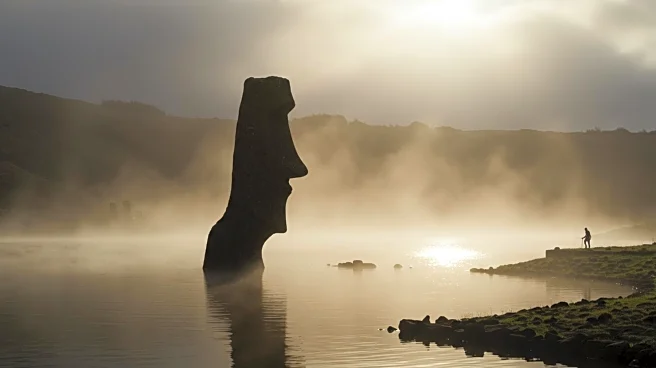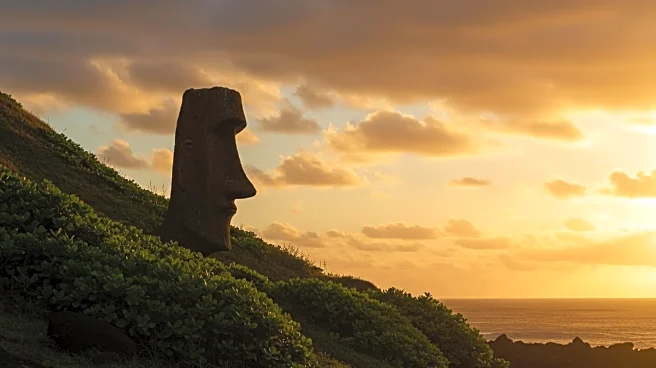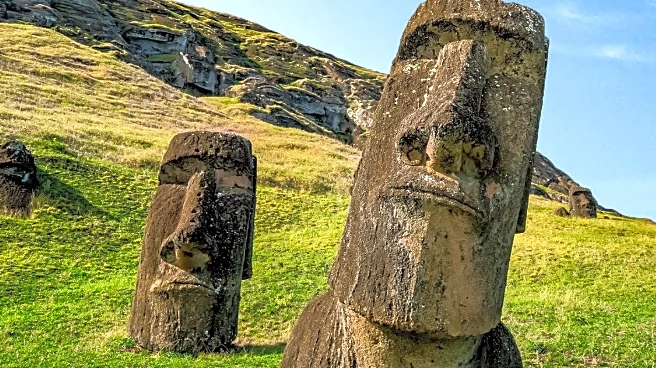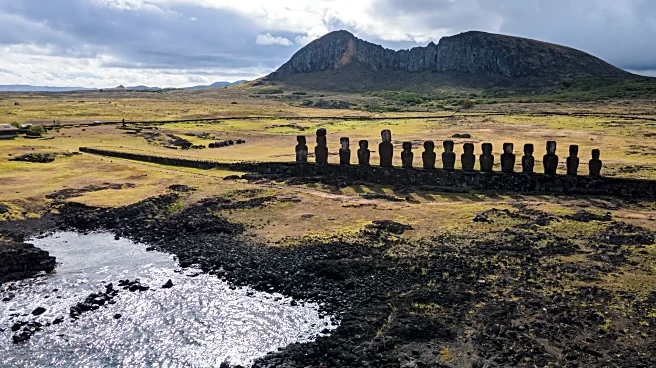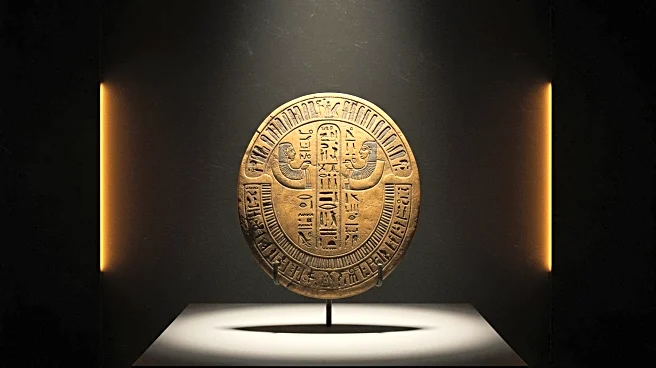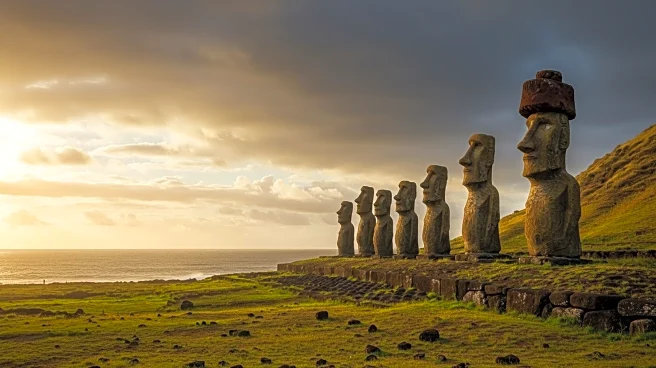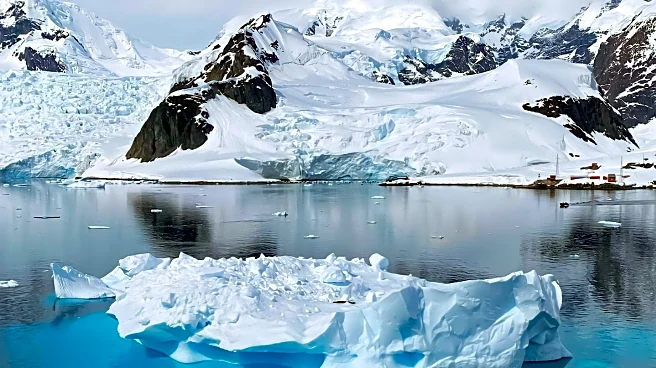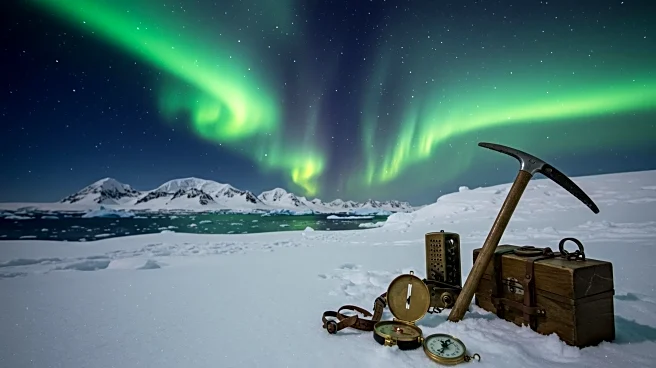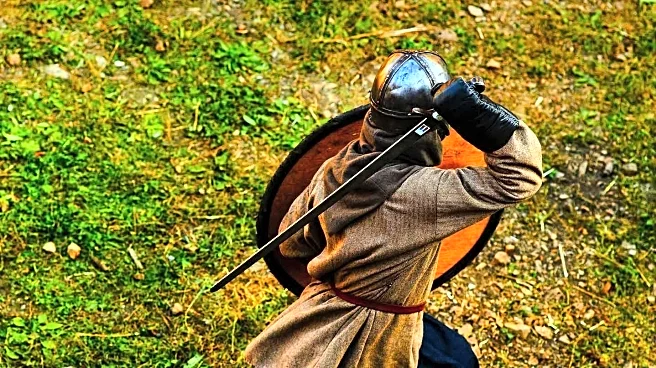What's Happening?
A previously unknown moai statue has been discovered in a vanishing lake on Easter Island, also known as Rapa Nui. Archaeologist Terry Hunt has indicated that this small statue may be part of a larger collection of hidden statues beneath the dried mud. The discovery was made as the lake receded, revealing the statue that even the island's ancestors were unaware of. Hunt plans to employ ground-penetrating radar to locate additional statues that may be buried in the area.
Why It's Important?
The discovery of the lost moai statue is significant as it could lead to further archaeological findings on Easter Island, potentially uncovering more about the island's history and the civilization that created these iconic statues. The use of ground-penetrating radar could revolutionize the way archaeologists explore the island, offering a non-invasive method to uncover hidden artifacts. This could enhance our understanding of the cultural and historical significance of the moai statues, which are central to the identity of Easter Island.
What's Next?
Archaeologist Terry Hunt plans to use ground-penetrating radar to search for more hidden statues beneath the dried mud of the vanishing lake. This technology could reveal additional moai statues, providing new insights into the island's archaeological record. The findings may prompt further research and conservation efforts to preserve these cultural artifacts, potentially attracting more interest and tourism to Easter Island.
Beyond the Headlines
The discovery raises questions about the environmental changes affecting Easter Island, such as the receding lake that led to the statue's exposure. These changes could impact the preservation of the island's archaeological sites and necessitate new strategies for conservation. Additionally, the use of advanced technology like ground-penetrating radar highlights the evolving methods in archaeology, allowing for more precise and less invasive exploration of historical sites.
